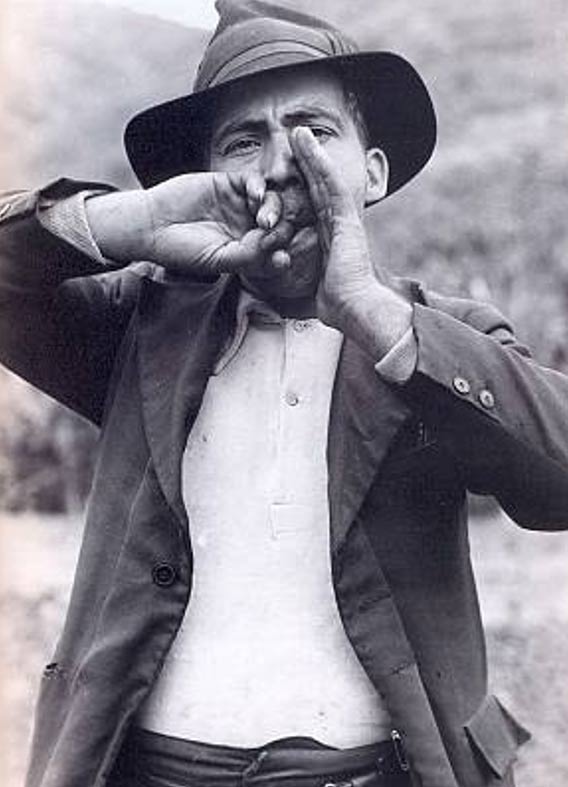
A Unique Form of Ancient Communication: The Whistling Island of La Gomera
An old English proverb states that “necessity is the mother of invention”. On La Gomera in the Spanish Canary Islands, a need arose among its inhabitants to communicate with each other over the island’s natural landscape of deep valleys and steep ravines. The result of this need was the invention of a language known as Silbo Gomero or el silbo, meaning ‘Gomeran Whistle’ and ‘the whistle’ respectively.
Prior to the colonization of the Canary Islands by the Spanish in the 15 th century, La Gomero was inhabited by a people known as the Guanches. The Silbo Gomero was a whistled form of the Guanche language, and is believed to have been invented by these natives of the Canary Islands.
By the 17 th century, however, the Guanche language died out, and little is known about this language apart from the few words recorded in travelers’ journals, and a few other words incorporated into the form of Spanish spoken on the islands.
MORE
- The Music of the Maya: Mysterious whistles Confound Experts
- Aztec Death Whistle Sounds like Human Screams and May Have Been Used as Psychological Warfare
- Three-Thousand-Year-Old Living Language Loses Last Monolingual Speaker
It has been thought that the Guanche language had a simple phonetic system which allowed it to be adapted into a whistling language.

The narrow valleys of La Gomera. Wikimedia Commons
After the colonization of the Canary Islands, the islanders began using Spanish as their spoken language. Out of practicality, just like their Guanche-speaking ancestors before them, the people of La Gomera began to adapt Spanish into a whistling language. In the whistling language of La Gomera, each vowel or consonant is replaced with a whistling sound – two distinct whistles replace the five Spanish vowels, and four whistles replace the consonants. Based on variations in pitch and whether they are interrupted or continuous, the whistles can be distinguished, and any message can be conveyed between one user and another.
The whistling language can be heard in the following short documentary:
In the past, the whistling language was passed down through direct contact between master and student, and usually within the family. This has ensured its survival over the centuries.
Between the 1930s and 1950s, the whistling language was a means of resistance against the authorities. Some of the older generation relate that during those decades, the Guardia Civil would often pick locals up in trucks and drive them to places on the island where a fire had broken out, to help combat the flames. This forced fire-fighting was not welcomed by the island’s inhabitants (who incidentally were not paid for their hard work, even though the council and mayor had received the funds to pay them), and so they would warn each other using the whistling language. Since the Guardia Civil did not understand the whistling language, they were frequently unable to find the locals, as they had already gone into hiding by the time the Guardia arrived in their villages.

Man whistles the Silbo Gomero language. Credit: Gouvernement des Canaries
By the 1950s, however, economic difficulties forced many locals of La Gomera to emigrate from their homes to neighboring Tenerife and even Venezuela. As a result, whistling began to decline. The growing road network on La Gomera and the subsequent invention of the mobile phone further decreased the need for the whistling language among the island’s inhabitants.
MORE
- Europeans share more language and genes with Asia than previously thought
The Ancient Origins of Some Dead or Dying Languages
By the end of the 20 th century, there were so few speakers that the whistling language became nearly extinct. Fortunately, in 1999, Silbo Gomero was introduced as a mandatory subject in grade schools across the island. Additionally, the education ministry of the Canary Islands spends about 100,000 euros (106,000 dollars) per year on Silbo Gomero projects to keep the language alive. As a result, the whistling language is experiencing a revival, and about 3,000 students are currently learning this language in their schools.

Photos depicting modern usage of the ancient whistling language Silbo Gomero. Tino Prieto/Flickr
In 2009, the whistling language was inscribed in UNESCO’s List of the Intangible Cultural Heritage of Humanity, thus providing the international recognition due to this unique heritage of the islanders of La Gomera.
Featured image: Museum display depicting the Guanches people of La Gomera and Tenerife. Wikimedia Commons
References
Henn, S., 2007. Spain: Whistling Words Through The Mountains Of La Gomera. [Online]
Available here.
Josh, 2015. The Whistling Island. [Online]
Available at: http://www.atlasobscura.com/places/whistling-island
Plitt, L., 2013. Silbo gomero: A whistling language revived. [Online]
Available at: http://www.bbc.com/news/magazine-20953138
theculturetrip.com, 2015. Whistled Speech In La Gomera. [Online]
Available at: http://theculturetrip.com/africa/canary-islands/articles/whistled-speech/
UNESCO, 2012. Whistled language of the island of La Gomera (Canary Islands), the Silbo Gomero. [Online]
Available at: http://www.unesco.org/culture/ich/RL/00172
Upton, E., 2013. The Language Made Up Entirely of Whistles. [Online]
Available here.
www.lagomera.travel, 2015. The Whistle. [Online]
Available at: http://www.lagomera.travel/canary-islands/la-gomera/en/about/the-whistle-of-la-gomera/
By Ḏḥwty















